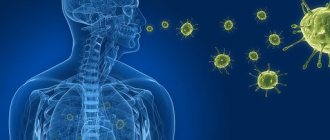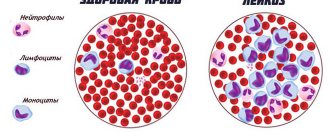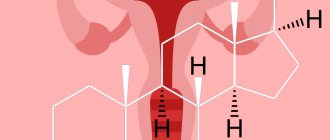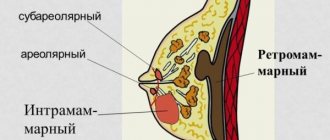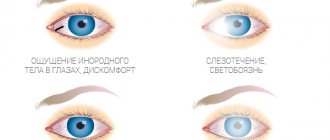Magnetic fields have a mysterious effect on the body; many attribute healing properties to them. Many rehabilitation and spa treatment programs contain these procedures and promise a powerful healing effect. Is this really true and in what cases can magnetic therapy help?
The earth's magnetic field affects us throughout our lives, so this is not unusual for our body. Thus, according to numerous studies, no harm has been recorded from magnetic therapy, regardless of its type. Magnetotherapy is one of the types of physiotherapy, when one or another effect on the body should lead to a therapeutic effect. Typically, a course of magnetic therapy is carried out as part of a rehabilitation program. It is used for:
- diseases of the musculoskeletal system;
- diseases of the cardiovascular system;
- neurological problems;
- pulmonary diseases;
- problems of the digestive system;
- in gynecology, surgery and trauma.
Types of fields in magnetic therapy
Several types of magnetic fields are used:
- Variables - appear in the coil when an alternating electric current is passed through.
- Permanent - when passing a direct electric current or from fixed permanent magnets.
- Pulse - changing in strength, but stable in direction.
- Traveling pulsed - implemented by sequentially switching on coils, so the field moves in space.
- High-amplitude pulse - occurs at a high voltage current with an ultra-short duration. Unlike other fields, they can excite nerve fibers and stimulate muscles.
The general therapeutic effect is associated with nonspecific reactions of the nervous, immune and humoral regulatory systems, the body's reserves and compensatory-adaptive mechanisms are activated. The question arises: is it possible to carry out such procedures at home, without visiting medical institutions?
Typically, a course of magnetic therapy is carried out as part of a rehabilitation program.
MAN AS A BIOSYSTEM
I approach a person as a biological system from the perspective of cybernetics, and cybernetics as a control system presupposes the presence of three components:
1. Control system (brain); 2. Controlled system (organ, tissue – hereinafter organ); 3. The transmission system (nervous network) is the connecting link of systems (1) and (2).
But the main, fundamental difference between cybernetics and other control systems is the presence of direct and feedback between systems (1) and (2) through system (3).
The human body is literally riddled with nerve fibers. These fibers in the organ have nerve endings - receptors (sensors). It is fundamentally important that through direct nerve communication, nerve impulses go only from the brain to the organ, and through feedback, only from the organ to the brain.
The brain constantly compares these impulses and thus debugs complete information about the state of the organ, and if the organ deviates from the norm, it itself “heals” it. Such strict control of the body by the brain allows a person to live a long life. But the brain’s capabilities in maintaining human health are unlimited.
The first sign of the disease is pain. Pain manifests itself in different ways: it can be pain, itching, muscle tightening, etc. In this state, the brain informs that the organ is out of its control and other actions are needed. When pain occurs and to relieve it, you need to use PMP, which, by acting on the organ’s receptors, restores their function, and brain regulation returns to normal.
This is interesting:
A mixture that “expels” pus from the body: from abscess, osteomyelitis, mastitis and severe bruises
The pain needs to be relieved as quickly as possible, using PMP, and not medications, since the drug only blocks the passage of the nerve impulse, and the organ itself does not heal.
This is a very short and simplified cybernetic mechanism for treating PMP.
It should be added to the above that regulation mainly comes from the subcortex of the brain. The cerebral cortex and subcortex are connected by a nervous network, so treatment is strongly influenced by the patient’s psycho-emotional state.
I would like to warn readers that treatment with PMP is not a panacea for all diseases, but a very effective method. About water. I use it a lot - both like this and with tea, in any case, at least 3 liters a day, also magnetized.
Devices
Almag-01 Magnetotherapeutic device using a traveling pulsed field. The easiest to use, has 1 program. Activated by plugging into a socket and automatically turns off after the session. The emitter consists of 4 coils connected into a flexible line. This allows you to use it on any part of the body, regardless of the terrain, including covering the joints around the circumference.
Almag-02 Magnetotherapeutic device. A device with advanced functions and a large emitter in the form of a grid of coils. They can be easily transformed into either a ruler-shaped emitter or single coils on a holder. The device has 79 operating programs, and a large impact surface can have a significant effect on the entire body.
Almag-03 Magnetotherapeutic device. This kit is also called Diamag, it was created specifically for procedures aimed at brain function. The device includes 2 plates with emitters and straps for fixing on the head, as well as the device itself with 4 different exposure programs. This device can be used not only at home, but also in medical institutions. The testimony states Parkinson's disease and other brain diseases.
Almag+ magnetic therapy device. Consists of 2 dual emitters, which can be laid either in a matrix or linearly. The device has 3 types of programs.
The device has three types of programs and is suitable for use at home.
Healing properties of magnet treatment
The magnetic field has special biological activity and the ability to have a healing and preventive effect on the human body. Thus, the healing properties of the magnetic field have a beneficial effect on micromolecules of the body, such as proteins, nucleic acids and other compounds, due to which their energy increases and the speed of biological reactions and processes that occur in the human body increases.
The impact of magnetic procedures on the body of each person is purely individual. Thanks to magnetic therapy, the functioning of all body systems is corrected; if any organ works beyond its strength, magnetic therapy reduces this function, and if, on the contrary, it increases its activity.
Pathological processes in the body are reversed. A changing magnetic field, in comparison with a constant one, has a more pronounced healing effect on the human body. The constant impact of a magnet on the body improves blood circulation and activates many vital processes of the body.
Contraindications
Contraindications for low-frequency magnetic therapy are:
- acute period of heart attacks and strokes;
- coronary heart disease with heart rhythm disturbances;
- pregnancy;
- bleeding.
Also contraindications include epileptic syndrome, fever above 38°C, and severe exhaustion.
High-intensity magnetic therapy is contraindicated in patients with:
- implanted pacemakers;
- epilepsy;
- thyrotoxicosis;
- oncological diseases;
- within 2 months after myocardial infarction;
- systemic blood diseases;
- cholelithiasis;
- bone fractures before immobilization.
Magnet Application Points
Wrist
The wrist is an active point on the human body. This view is shared by both Asian and Western medicine. For example, the Chinese judge a person’s vitality by the condition of the wrist. It’s easy to attach a magnet here, say, by wearing it as a bracelet. The proximity of the vessels and the simplicity of magnetic therapy using a bracelet make this method of home treatment with magnets the most popular.
Sellers of bracelets estimate that about 14,000,0000 bracelets with magnetic properties are sold around the world every year. This method of combating rheumatic or headaches, arthritis and motion sickness is used by pensioners, athletes and even children. The magnetic bracelet corrects the functioning of the respiratory system, cardiovascular system, and supports the body’s defenses during acclimatization or intoxication.
Neck, back
Belt with magnets
Neck jewelry made of active metals, therapeutic collars, belts or corsets supporting the spine with magnetic elements are very popular among those who are concerned about osteochondrosis, lordosis, joint diseases, bone problems, etc. The second category of people who choose to wear a magnet on their neck are patients with bronchopulmonary pathologies. Jewelry is also worn on the neck for gynecological diseases, dermatitis of the upper half of the body and high blood pressure. Sometimes the magnet is simply hung on a long string so that it hangs under clothing to the solar plexus area or to the abdomen.
Overlays “for sore spots”
Manufacturers produce underwear with magnetic strips or plates sewn into it, which fit snugly exactly where it is needed. There are ready-made knee pads, elbow pads, corsets, panties, and masks to solve a variety of problems.
Rugs
Rugs with magnets
The mats are intended for those who want to be treated for insomnia, neuroses and other misfortunes without leaving the sofa or their workplace. There are special mats-discs for placing on their carafe with water that needs to be magnetized. It is believed that rugs can reduce geopathogenicity around them. The magnetic disk is used for taking a bath, the duration of which should be no more than 15 minutes. A bath helps with the primary symptoms of acute respiratory infections, since magnetized water is a natural antiseptic. You can douche with it, gargle, apply to affected skin, or drink.
Electromagnetic devices
Magnetic-infrared laser therapeutic device RIKTA-ESMIL(2)A
Devices treat everything. In the devices, magnets are positioned in a certain way: a low-frequency field is created that improves lymph and blood flow. Devices with magnets are effective in the treatment of osteochondrosis, since its cause is impaired nutrition and blood circulation in the spinal disc, and a magnet eliminates these problems.
Micromagnets
Comfortable fit for those who travel or lead an active life.
Micromagnets
Strength of effect
In studies, magnetic therapy has a greater effect on the nervous and cardiovascular systems. Main effects were associated with decreased pain, anxiety, and improved quality of life. That is, if the problem contains one or more of these components, a positive effect may be noted.
To be satisfied with the result, you cannot have high expectations. Since the mechanism of action of the magnetic field on the body is quite difficult to perceive, misconceptions may arise, the image of a “magic pill” or hope for a miraculous healing may be formed when doctors could not help. Physiotherapy is always combined, and although it may be an important part of treatment, it will not be the only one. A typical example would be the image of an overweight person with knee pain. Courses of anti-inflammatory drugs help with varying degrees of success. One of the key reasons is excess weight, which leads to pain. Buying a device without adjusting your lifestyle and losing weight is unlikely to give the desired effect.
First, you should consult a specialist, follow the recommendations as much as possible, and then with peace of mind you can supplement this with magnetotherapy at home.
What to treat with a magnet?
It is recommended to use a magnet in parallel with the main treatment for the following diseases:
- disturbances in the functioning of the cardiovascular system;
- neuritis;
- neuralgia;
- migraine;
- vegetative-vascular dystonia;
- hypertension 1-2 degrees;
- IHD accompanied by angina pectoris;
- hypotension and post-infarction cardiosclerosis;
- dysfunction of the central nervous system and PNS;
- ischemic stroke;
- mechanical injury to the spine;
- disruptions in spinal circulation;
- polyneuropathy of various origins;
- neuroses or neurasthenia;
- depression, insomnia and seasonal nervous diseases;
- disturbances in the functioning of peripheral vessels;
- 1,2,3 stages of atherosclerotic changes;
- chronic lymphovenous insufficiency;
- Raynaud's syndrome;
- thrombophlebitis;
- arrhythmia and tachycardia;
- ODA diseases;
- arthrosis and arthritis of various origins;
- a variety of mechanical injuries;
- bronchopulmonary diseases (except those that require hormonal treatment);
- disturbances in the functioning and diseases of the gastrointestinal tract;
- pathologies and diseases of the ENT organs;
- acute and chronic diseases of the genitourinary system;
- abnormalities in the functioning of the genitourinary system (painful menstruation, decreased potency, early menopause, etc.);
- dermatological problems;
- weeping wounds, bedsores, dermatological problems such as eczema, as well as frostbite or burns;
- postoperative conditions during the rehabilitation period;
- adhesions of various origins;
- low immune status.
